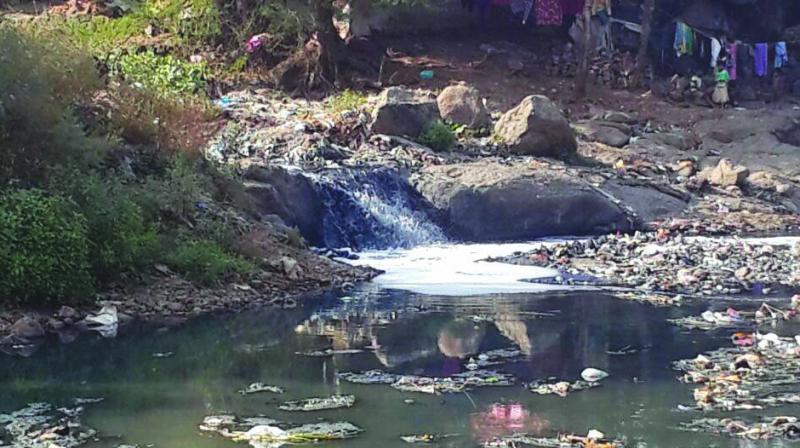Potable water affected by polluted rivers
The quality of raw water is deteriorating due to some unknown effluents mixing in it at upstream locations.

Mumbai: The Ulhas and Waldhuni rivers in the Thane-Badlapur belt are reeling under pollution, and top of this, government documents reveal that the quality of treated water, which is further supplied to residential and industrial complexes for drinking purpose, is also poor. An RTI query revealed that the Maharashtra Industrial Development Corporation (MIDC) has complained to the Maharashtra Pollution Control Board, stating that due to the pollution in the river near the water intake well of MIDC Barvi water works in Jambhul and Shahad area, the quality of the treated water has been severely affected.
“The quality of raw water is deteriorating due to some unknown effluents mixing in it at upstream locations. The colour of Ulhas river water is also found to be slightly blackish,” said the MIDC letter.
A lab test report of the water sample from Ulhas and Waldhuni rivers by citizens group revealed that the pH value of the treated water at some sites ranged between 1 and 5, which is beyond the standard limits. “We have been repeatedly complaining to the civic authorities, yet the situation remains the same,” said Satyajit Burman, member of Ambernath, Citizens Forum.
The MPCB has directed the Ulhasnagar Municipal Corporation to divert the Khemani nullah that has been releasing untreated sewage into the Ulhas River. “The Nullah continues to drift untreated sewage into the river. The MPCB has directed the civic body to divert the nullah by January 2018,” said D.B. Patil, Regional Officer, MPCB.
Standards to adhere to
According to the standards laid by Ministry of Environment and Forests, Government of India for CETP, as per Environment Protection Rules, 1986, the pH should be recorded between 5.5-9. Permissibe limit for the COD is 250 mg/l.
